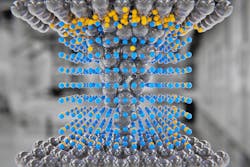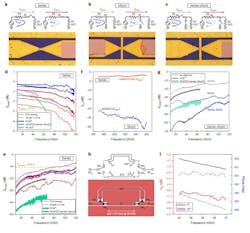Advanced-Materials Memristor Targets Nascent 6G Needs
What you’ll learn:
- Basic component functions that will likely be required for the emerging 6G standards.
- Why the memristor is a possible 6G-relevant component.
- Details of one group’s work on a 6G-viable memristor switching device.
If you’re recovering from the 5G hype as well as its reality with respect to architectures, components, and more, don’t expect to have too long a break. Why not? The reason is that technology leaders from academia, industry, and standards-setting organizations are already working on shaping the next-generation 6G standard, which will further increase speeds and move up the frequency spectrum.
Even though 6G specifics aren’t imminent, researchers are already defining and investigating early versions of some of the components that will likely be required.
Will Memristors Ever Hit It Big?
The needs of 6G brings us to memristors. Remember those? Touted a few years ago with considerable hype as the new, fourth passive device joining the trio of resistors, capacitors, and inductors, they were supposed to be a solution to memory-component limitations (see References at end of article).
What is a memristor? It’s a nonlinear, two-terminal electrical component relating electric charge and magnetic-flux linkage, first described and named in 1971 by Leon Chua, thus completing a theoretical quartet of fundamental passive electrical components that also comprises the resistor, capacitor and inductor. They were going to be the “next big thing,” but, as with tunnel diodes, that hasn’t quite worked out. However, they may find success in other specialty situations (again, similar to tunnel diodes) and even AI processors.
For now, the reality is that they haven’t taken a significant role, but maybe it’s still too early. As Yogi Berra reportedly remarked, “Predictions are hard to make, especially about the future.” I checked the last few years of the classic “Gartner Hype Cycle,” which divides technology advances into four stages (Innovation Trigger, Peak of Inflated Expectations, Trough of Disillusionment, Slope of Enlightenment), and didn’t see them listed under any stage.
Clearly, a signal-blocking on/off switch that handles signals at the system carrier frequencies is essential to any communications architecture. Among the fastest elements currently used for the switching functions are silicon-on-insulator MOSFET devices operating at tens of gigahertz. However, they’re volatile and require a constant power source to maintain the ON state, which is a burden at the system level.
New Memristor Switch Doubles Operating Frequency of Silicon Devices
Addressing this issue, a multi-university research team has developed a memristor switch that’s capable of useful performance at twice the operating frequency of current silicon-based devices. It offers a frequency range of up to 120 GHz, and without the need to apply a constant voltage.
The new switch uses a non-volatile material called hBN (hexagonal boron nitride), which allows its ON or OFF state to be activated by applying a voltage pulse instead of a constant controlling voltage (the solid-state analog to a latching electromechanical relay). The end result is significant energy savings.
Until now, very fast switches had been developed experimentally from two-dimensional networks and hBN bonded together to form a surface. With this arrangement, the device frequency could reach up to 480 GHz, but only for 30 cycles, and so it had little practical application.
The new device uses the same material, but it’s arranged in a superposition of layers (between 12 and 18 layers in total) that can operate at 260 GHz and with a sufficiently high stability to be implemented in electronic devices (Fig. 1).
They used a conductance-enhancing method to systematically achieve low on-state resistance (RLRS) below 10 Ω (as low as 4.5 Ω) and demonstrated an endurance of 2,000 cycles. Their devices show losses below 2 dB and isolation above 30 dB at frequencies up to 260 GHz, with cutoff frequencies of 7 THz (extracted from equivalent-circuit models). They also developed RF millimeter-wavelength switch circuits with better than 35-dB isolation in series-shunt configurations at 120 GHz (Fig. 2).
Any detailed exposition of what they did and how they did it gets into some fairly deep solid-state device physics, of course. For those interested, the work is detailed in a 10-page Nature Electronics paper “Memristive circuits based on multilayer hexagonal boron nitride for millimetre-wave radiofrequency applications” (it’s behind a paywall but, fortunately, an open-source version is can be downloaded here).
The authors have done their homework as seen in the paper’s Table 1, “Low-voltage switch technologies for mmWave applications,” which compares 13 switch-technology approaches with respect to 10 key parameters. There’s also a 30-page Supplementary File, which isn’t behind the paywall here.
The project is an international collaboration involving researchers from the Universitat Autonoma de Barcelona (UAB), King Abdullah University of Science and Technology (KAUST) in Saudi Arabia, University of Texas at Austin (USA), the Tyndall National Institute, and University College Cork (the latter two are in Ireland).
References
IEEE Spectrum, “Memristors Run AI Tasks at 1/800th Power.”
Gartner Inc., “Gartner Hype Cycle.”
Science Direct, “Memristor.”
American Scientist, “The Memristor.”
Nanowerk, “Memristor.”
Utmel Electronic, “Basic Introduction to Memristor.”


